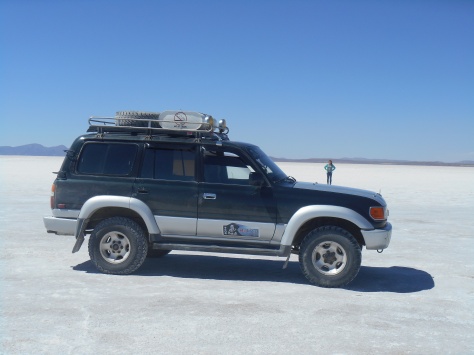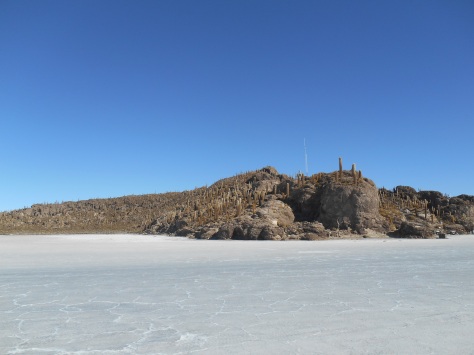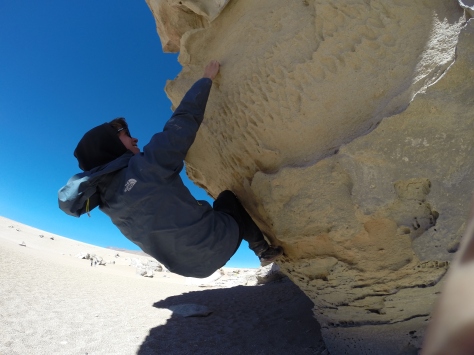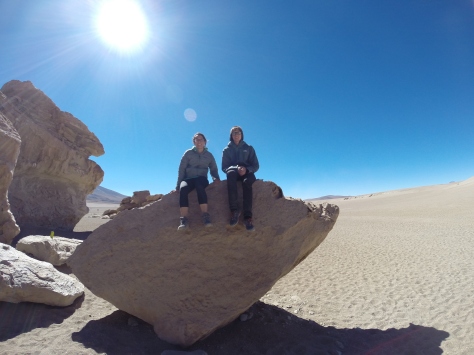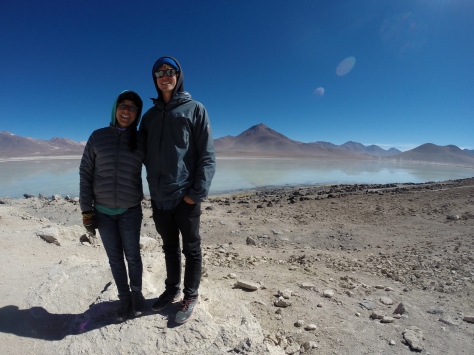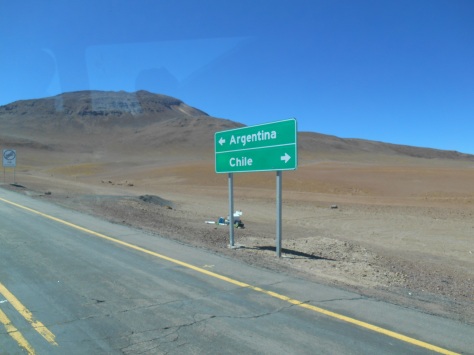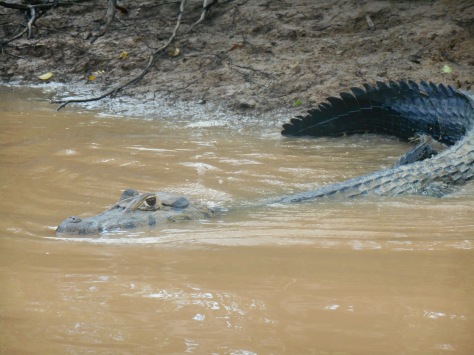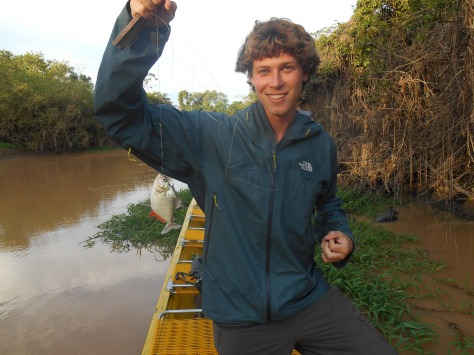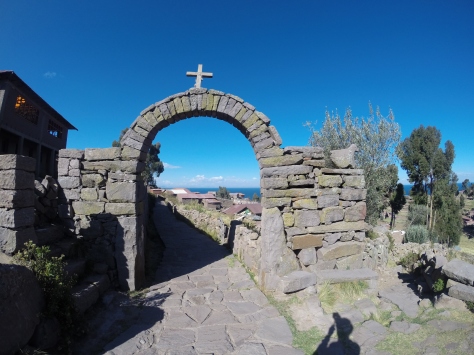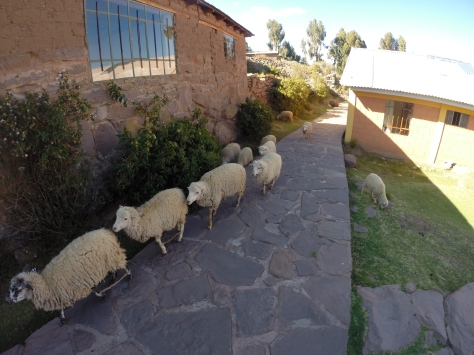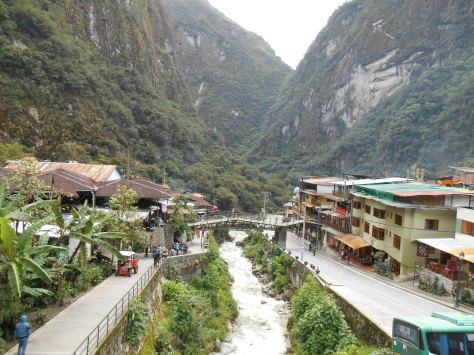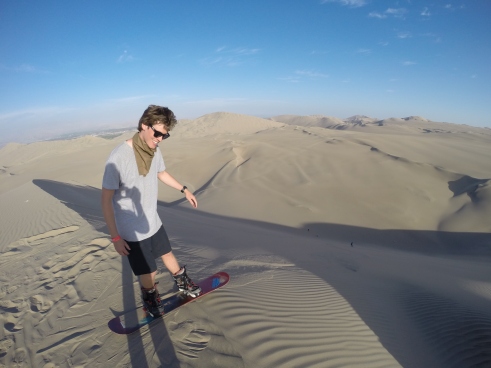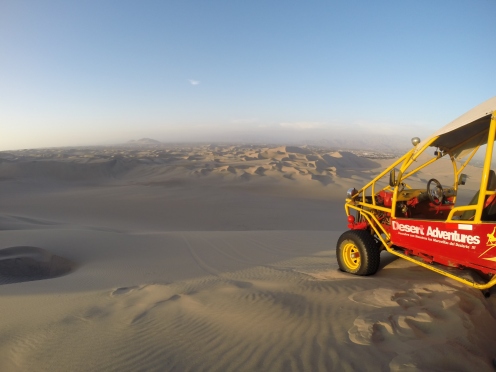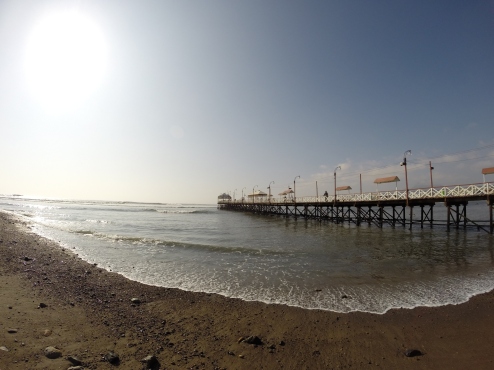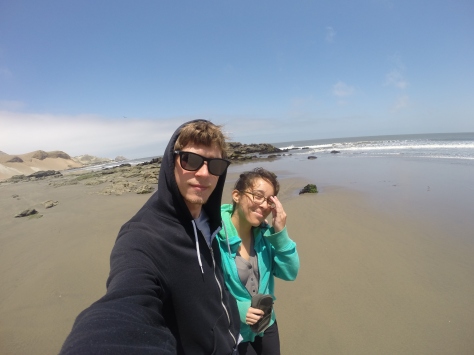After taking a night bus from La Paz to Uyuni, we got off in Uyuni and were immediately bombarded by hoards of people trying to sell us tours to the salt flats. We had to fend off the vultures so we could walk to the center of town to look at agencies ourselves. I don’t want to spend too much time on how the lady we booked with lied to us, but if you want more information on that you can read this earlier post: https://backpacksandbucketlists.wordpress.com/category/tips/
We booked a tour for that day, not wanting to actually stay in the town of Uyuni, with the plan of being dropped off in San Pedro de Atacama, Chile after our three day tour. We were in the car waiting for everyone else in our tour when all of a sudden I hear Chris say, “No. Way. You have got to be kidding me.” I turn around, see nothing to worry about and ask what is wrong. With one small word I instantly know that our next three days are going to be interesting. “America,” Chris responds. Our fellow countryman (who we have managed to run into three previous times during our trip) gets into our car. For anyone who hasn’t read our blog up to this point, America said things like “Ho-la” when attempting Spanish. That is, if he tried to speak Spanish at all. Luckily, three cool Brazilians named Pedro, Francisco, and Rodolpho got into our car too, so the tour didn’t end up being a disaster.

Once everyone was loaded up in the car, we headed to a sort of “train cemetery” in the middle of the desert, about 3 km outside of Uyuni. You’re allowed to climb over all of the trains, which meant there were hundreds of tourists doing it because it was the first stop for every tour group.
We then went to the salt mounds where it can create awesome reflections if there is any water on the ground, which unfortunately there wasn’t. After that we headed to the salt flats where there was nothing around. It’s here where you can do some great perspective photos. We also stopped by an island in the middle of nowhere that had hundreds of cactuses on it.

It was a long drive after that to our hotel for the night. A lot of this tour consisted of driving, but the landscape was breathtaking so it was worth it. The hotel we stayed at was made of salt which was definitely interesting. And when we walked in, the floor was just a bunch of loose salt. Everyone wondered what it would be like if we sprinkled some of it on our food, but no one was brave enough to do it. One major perk to staying a salt hotel is that it is surprisingly warm. The insulation was great which was essential because it was freezing outside.

Chris and I tend to avoid drama at all costs, but sometimes that doesn’t mean much when you meet people like America. There were a few outlets that of course were overcrowded by all of the people staying at the salt hotel. Chris finally found one for our camera, making sure it would be charged for the next day. At some point, America unplugged our camera and plugged his in. Chris noticed, unplugged America’s camera, and plugged our back in. Some 30 minutes later a conversation along the lines of this happened:
America: “I can’t believe you did that.”
Chris: “What?”
America: “You know what. You unplugged my camera. I can’t believe you did that.”
Chris: “You unplugged our things first!”
America (condescendingly): “Do you know what this is?”
America then proceeds to hold up an adapter that you could plug multiple things into at once. Which is interesting since he decided to not plug our camera in.
Chris: “Yeah, well our things weren’t plugged in.”
America (even more condescendingly): “I don’t think you understand. There was a short circuit which is why your camera wasn’t charging.”
Chris: “No, I’m pretty sure it was because you unplugged our camera.”
America (seriously, he somehow got more condescending with every sentence): “No. You don’t get it. You don’t understand these things. I’ve worked as an electrician and it was a short circuit.”
Apparently, you have to work as an electrician to understand the concept of a short circuit which is news to me. Eventually the bickering came to a stop (though not the condescension), and tension was in the air. America eventually went to bed, so it was us and the Brazilians as they swapped around a guitar.
The next day involved some more driving. While our driver/guide was nice the first day, he seemed to develop some sort of grudge toward us on the second day. It ended up being fine because hanging out with the Brazilians was a hoot (and the funniest one somehow ended up being the one who spoke almost no English or Spanish). We saw a variety of lagoons, some teaming with flamingos, and all somehow having different colored waters.
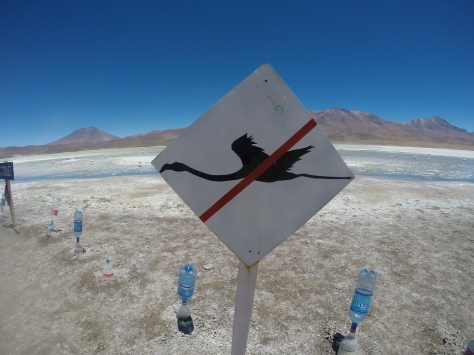



Our second night was spent at a refugio that was, well let’s just say, not made of salt. It wasn’t nearly as nice and was bone-chillingly cold. We somehow ended up in the wing that was even colder than the rest of the “refugio”. It was a miserable night’s sleep, but I suppose that didn’t matter too much because we had to wake up at 5 am for our last day.
After a breakfast of cold pancakes, we were off to see some geysers. Thankfully we were one of the first groups there so we had the whole place mostly to ourselves. The whole area smelled badly of rotten eggs/farts which I suppose was caused by high amounts of sulfur. Despite the unpleasant smell, it was an awesome place to see. The next stop was to some hot springs. Chris and I didn’t personally get in because the frigid air made it seem not worth it.

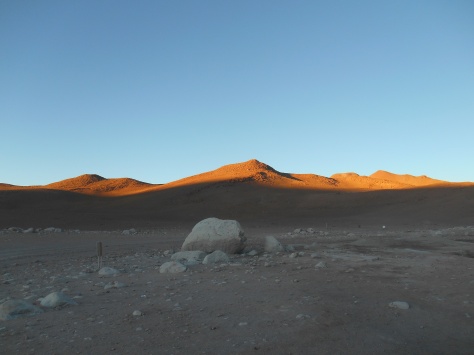

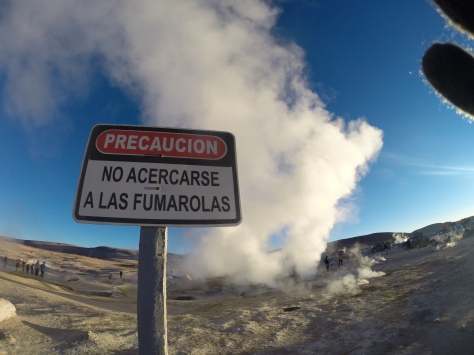
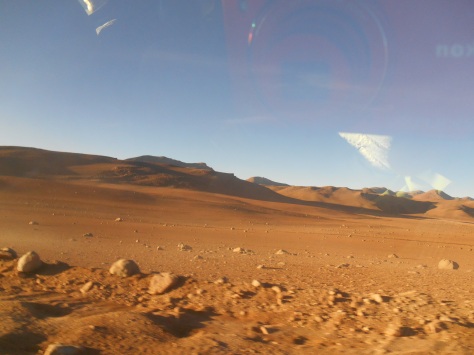


There were a few more stops at lagoons before we got to the border. Of course America also happened to be continuing to Chile with us so we had the displeasure of being in his company a bit longer. We eventually made it to the Chilean border crossing, where we had to wait an hour in our van. That’s because everyone that worked there decided to have breakfast at 10 am and close the whole border down. After the border was opened, we passed through and were dropped off in San Pedro de Atacama. America teamed up with a 20-year-old Brit (let me remind you that America is in his thirties trying to relive his college days) and when we got off the van we went our separate ways, never to see each other again.
















